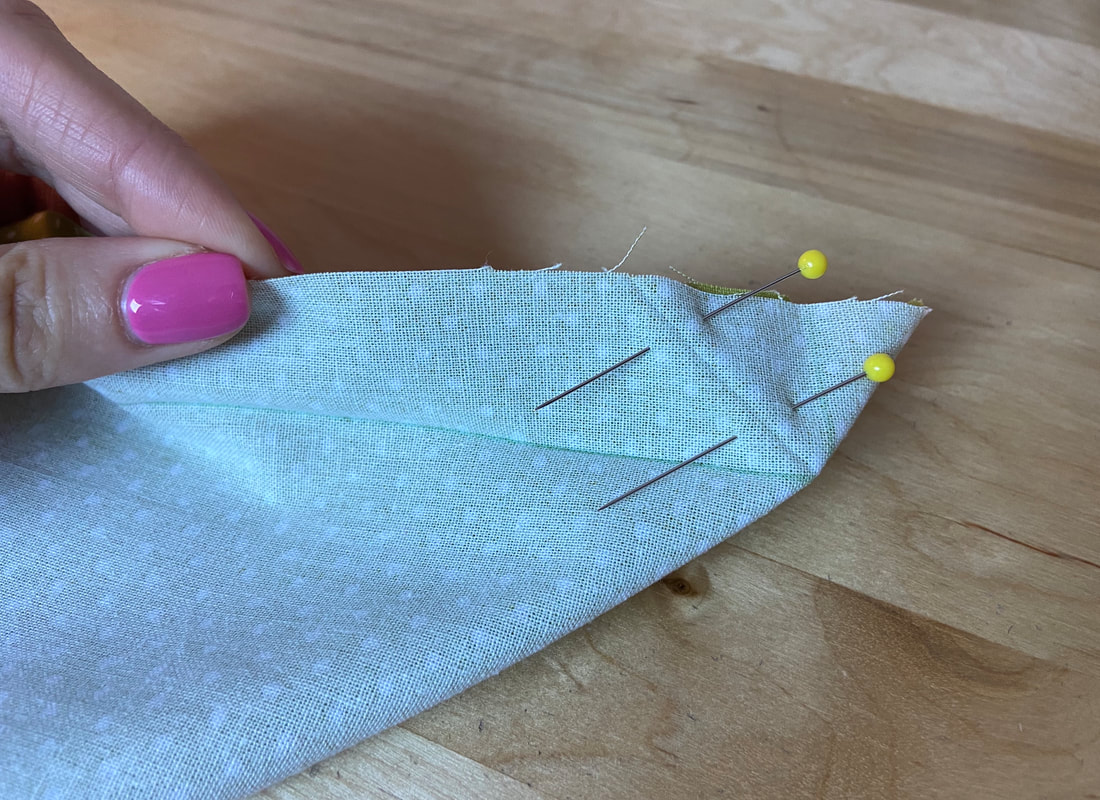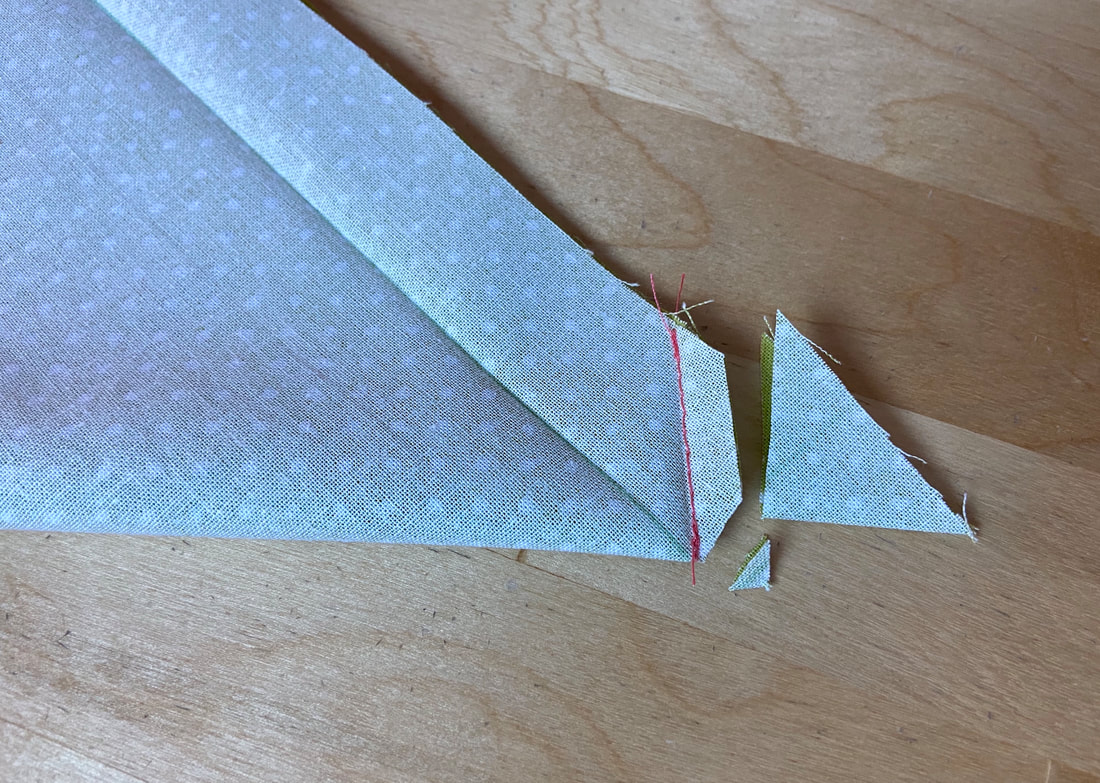Mini Tutorial: How To Miter Fabric Corner Seam Allowance
The most conventional way to finish fabric corners is by using the corner's vertical and horizontal seam allowance edges in a technique called mitering.
Here’s a simple way to miter a fabric corner:
Note: In this case, the seam allowance is 1” along all edges.
Here’s a simple way to miter a fabric corner:
Note: In this case, the seam allowance is 1” along all edges.
1. Start by folding and ironing each edge toward the fabric's wrong side at the designated seam allowance (1" here). Repeat on both horizontal and vertical edges intersecting the corner.
Once folded and creased, the fabric corner should have two intersecting fold lines which conveniently, also depict the corner's seamlines.
2. Fold the corner diagonally toward the wrong side of the fabric such that the crease line intersection point (shown above) falls directly on this diagonal fold. Again, iron as you fold to crease.
As a result, you should have 3 crease lines that intersect at a single point. This point corresponds to the finished corner point.
In the steps to follow, the diagonal crease line will provide a stitching guide for completing the mitering's diagonal seam.
In the steps to follow, the diagonal crease line will provide a stitching guide for completing the mitering's diagonal seam.
3. Fold the corner area such that the vertical edge aligns with the horizontal edge and the diagonal crease line is folded onto itself with the crease lines overlapping as shown.
Insert a few pins perpendicular to this diagonal fold. The corner point should fall directly on the folded edge.
Insert a few pins perpendicular to this diagonal fold. The corner point should fall directly on the folded edge.
4. Starting at the fabric raw edges, stitch following the diagonal crease line until you arrive at the corner point. If your fabric is more structured (medium-to-heavyweight), you can backstitch when arriving at the corner. If working with flimsy fabrics, its safer to tie the loose threads together instead as backstitching may cause crinkling and tension in the finished corner.
5. Once stitched, trim the excess fabric at about 1/4" from the stitch line.
6. Slash the corner seam allowance diagonally (as shown above) to allow more flexibility in the finished application.
7. Open the seam allowance edges and direct the seam diagonally in relation to the corner. Iron the open seam allowance flat.
8. Turn the mitered corner application on its right side and align the seam diagonally such that the finished vertical and horizontal edges fall directly on the crease lines applied in Step 1. Iron the finished corner and corresponding edges.
The finished mitered application should lay flat with a well-defined corner and evenly-folded edges. If you fold and iron the crease lines accurately in the initial process and follow them precisely while stitching, you should achieve a perfect mitered corner every time!












